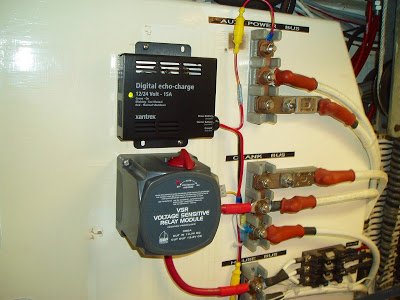JDCAVE
Guru
- Joined
- Apr 3, 2011
- Messages
- 2,905
- Location
- Canada
- Vessel Name
- Phoenix Hunter
- Vessel Make
- Kadey Krogen 42 (1985)
I guess I should ask how old the various batteries are but here is what he said about use...
The house bank is so big that you can sit for 3 days without starting the generator. You make your own water, have smart a charging systems and huge freezer capacity. She is totally equipped - heat, water, AC, freezers - with everything running you only need a short run on the main engines or 3 hours a day on the gen. to keep batteries up to max. Or sit for 2-3 days on the hook on batteries alone if you don't want to hear the gen.
Part of the reason for asking in the first place is, this is the second GB I've seen with a 1 ton flatdeck load of batteries down there and am wondering if they are outdated ('90s) systems.
I wouldn't really pay attention to what the broker I saying in the listing.
1) how old are the batteries? How have they been used over the years? It's easy to find out how old the batteries are but you won't know if they've been abused or not.
2) the inverter charger...it might be 90's technology. Ask. Just because it is, doesn't mean it isn't working to spec. If it's a 3 stage charger, it's fine for now. As I said, if you purchased that vessel, wait a year before you drop major coin on the electrical system until you know how it's behaving. It may be just fine for several years. Or...factor that in to your offer. In my view this is just one part of the equation to consider with the purchase of a vessel.
Jim
Sent from my iPad using Trawler Forum



 now you're talking!
now you're talking!